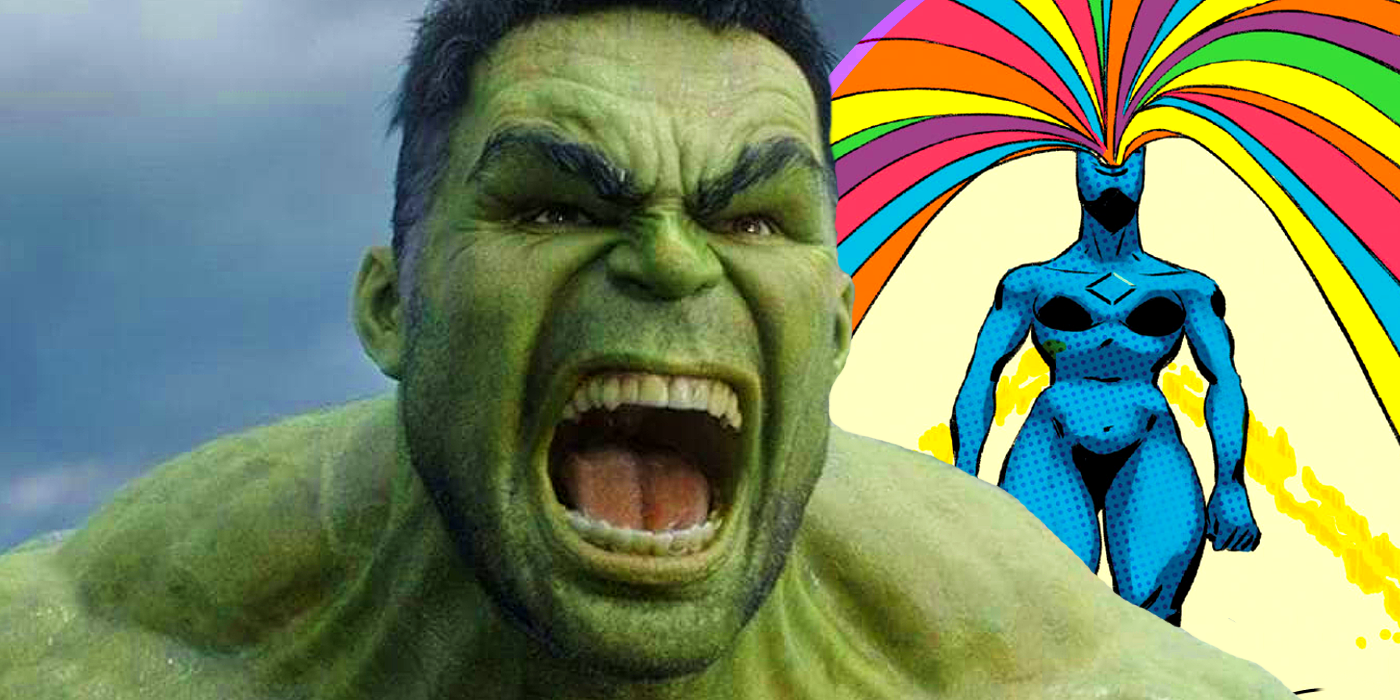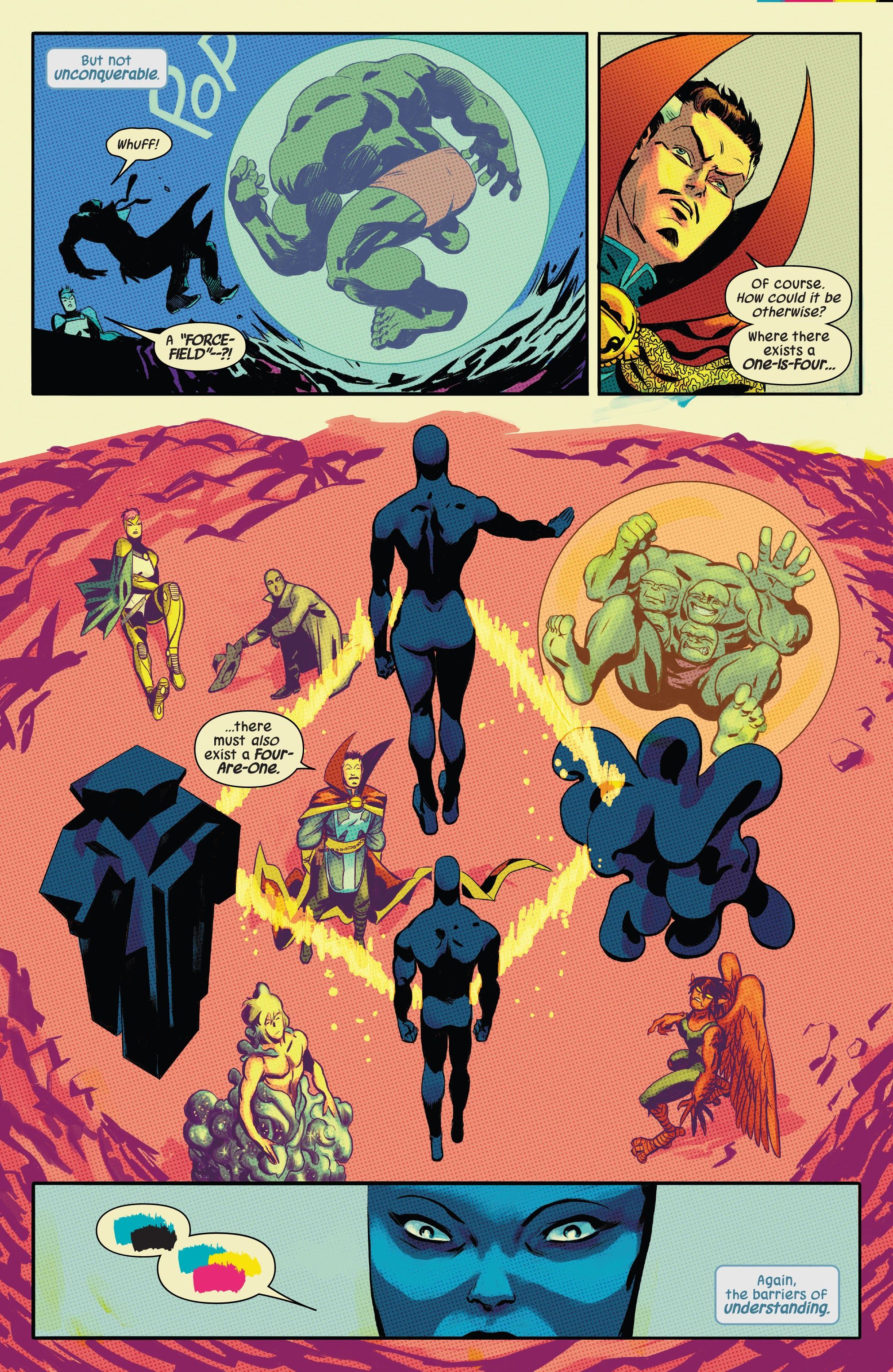Warning: contains spoilers for Defenders #4!
The origin of the Hulk keeps getting redefined by writer Al Ewing, even after the end of his acclaimed run on Immortal Hulk. In the pages of Defenders #4 - written by Ewing with art by Javier Rodriguez - the metaphysical connection between Hulk and the Fantastic Four, implied in Immortal Hulk #49, was reinforced with confirmation that the two are opposing archetypes.
Immortal Hulk was one of the most successful Marvel series of the past few years, in which the Jade Giant was reimagined by giving him a connection to primal forces of the universe. The final issues of the series explored the concept that the gamma radiation that created the Hulk and connects him to the otherworldly Below-Place has a polar opposite: the cosmic rays that gave the Fantastic Four their powers. In issue #49, the origin stories of the Hulk and the Fantastic Four were matched in a sequence that highlighted parallels and dichotomies, such as Bruce Banner's gamma bomb and the rocket the Fantastic Four rode into space being different results of the same process. Now, this idea is being further developed in Defenders.
The new Defenders team assembled by Dr. Strange have been traveling through the previous iterations of the Marvel Cosmos, hunting for rogue scientist Carlo Zota. Arriving into the Fourth Cosmo, the Defenders are confronted by its inhabitants, archetypal beings who represent the primal avatars behind all Marvel characters. Hulk's equivalent is the first one they meet, the One-Is-Four, a raging creature with four faces with different expressions. Immediately afterward, the Four-Are-One appears, the primal archetype of the Fantastic Four. "Where there exists a One-Is-Four," Strange comments, "there must also exist a Four-Are-One." This is a confirmation that, on the archetypal level, two of Marvel's oldest characters (having debuted in November 1961 and May 1962) are bound together as two sides of the same coin.
The Hulk is connected to the ancient, devilish "One-Below-All", while the Fantastic Four strive to chart the future and have met the very creator of the Marvel Universe (in the form of comic legend Jack Kirby) as friends. While Bruce Banner built a bomb, Reed Richards built a rocket, and after being transformed by their inventions, one came to embody scientific progress and the good it can do for mankind, while the other represents the chaos and destruction careless experimentation can cause. The Fantastic Four are "Marvel's First Family", their unity against the odds being their defining trait, while Bruce Banner's tragic family history (his abusive father killed his mother and was later killed by Bruce) is what created the divergent personalities of the Hulk.
These connections are fascinating on their own, but the heroes' connection on this early, archetypal level suggests they may always have been fated. If the One-Is-Four and Four-Are-One are reflections of each other, was Bruce Banner's origin an accident or predestination, and can he ever rise above his role as the monstrous opposite of a family of heroes? The idea that Marvel’s beloved First Family, the Fantastic Four, are on a cosmic level literally the counterbalance to the hated monster that is the Hulk opens a lot of narrative doors, introducing ideas which Ewing and other writers will hopefully continue to explore in the future.


